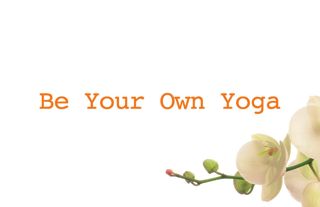23 Jan 10 Misconceptions about Yoga – Part 2
Only when you are able to do ‘Advanced’ poses, you will get a real benefit of practicing Yoga
or: 10 Misconceptions about Yoga
As a Yoga Teacher, I notice that there are a lot of misconceptions about yoga. I can list at least ten of them, which I will do spread out over several weeks.
This week I will elaborate on the premise that only when you are able to do ‘advanced’ poses, you will get a real benefit from practicing yoga. That is what many people seem to think. As the subtitle of this blog already suggests, I have a different opinion, and I even believe that there is no such thing as ‘advanced yoga’ as opposed to ‘beginner yoga’.
Last year during a week-long yoga retreat I was teaching in Bali, one of the participants had a wonderful insight. Half way in the retreat, she told me she had always thought she had to be able to do very difficult poses, and a lot of them, to really experience the benefits of yoga. Now she was experiencing that even with a few days of practice with relatively ‘simple’ poses, she felt so much better, and more aware of her body – as if she was reading my thoughts…
In the Western world (if not in most other parts of the world as well) the motto ‘no pain, no gain’ seems to rule, and is often applied also to the practice of yoga. If you don’t break out into a sweat during your exercise routine (whatever that may be), and if you haven’t worked hard, you haven’t really gained anything. I guess if your goal is to loose weight fast, to get a toned butt and a ‘six pack’ belly, this may be the way to go. But if you are looking to find a more intimate connection with your Self, to connect your body and mind (so you are actually able to listen to what your body has to tell you and what it needs, which, by the way, could be a way to loose weight), and to relax your being (by breathing deeply and stretching gently, thus calming the nervous system), you may need to find a different practice. Gentle yoga anyone?
As far as I’m concerned, looking at the root of the word Yoga (i.e. to yolk, meaning to unite), the practice of yoga is, amongst other things, about uniting the mind and the body. What that means, is to practice yoga in such a way that you actually have time to be aware of your breath and what you are doing, as well as to really feel what effect a certain stretch, movement or posture has on your being. In that sense, for most people less is actually more.
Imagine you are doing a one-handed handstand with your legs in Lotus Pose (a crossed position), which may be considered an advanced pose. Unless you have practiced this posture for many years (or if you work at Cirque du Soleil), this mental imagine most likely doesn’t give you a relaxed feeling nor does it elicit deep breathing. Now imagine you are practicing a ‘simple’ Seated Forward Fold (perhaps with the help of my suggestions in last week’s blog). Can you feel how this position gently stretches the back of your body, helping to release physical (and even mental) tension? Would you be able to breathe deeply and slowly in this pose? I think you get what I mean.
The ‘advancedness’ of a yoga practice is not so much related to what you are doing, as it is to how. Practicing physically challenging yoga postures when you are not able to relax into them, let alone breathe deeply, have little positive effect on the body, nor will they result in a calm state of mind. When you can stand in Extended Mountain Pose (i.e. standing upright on both legs with feet parallel, legs gently engaged, pelvis in a neutral position, with a straight and elongated spine, and the arms lifted over head while relaxing shoulders away from the ears), breathing deeply, aware of all physical sensations, and being completely present in the moment, I would call that advanced practice.
So am I saying that a fast-paced (hot) vinyasa yoga practice is wrong? No, of course not. What I am saying is, that it may be helpful to be conscious of what it is you are practicing, and with what aim (and then preferably to let go of the fruits of your actions). If you want to practice yoga for more than physical reasons (and even then), I believe it is more beneficial to practice 5 minutes of gentle yoga every day, than to take an ‘advanced’ class once a week.
Want to give it a try? I made a video of a gentle 5-minutes (morning) yoga practice during one of my yoga retreats in Bali a few years ago. Please click here to follow along. Enjoy your practice!
